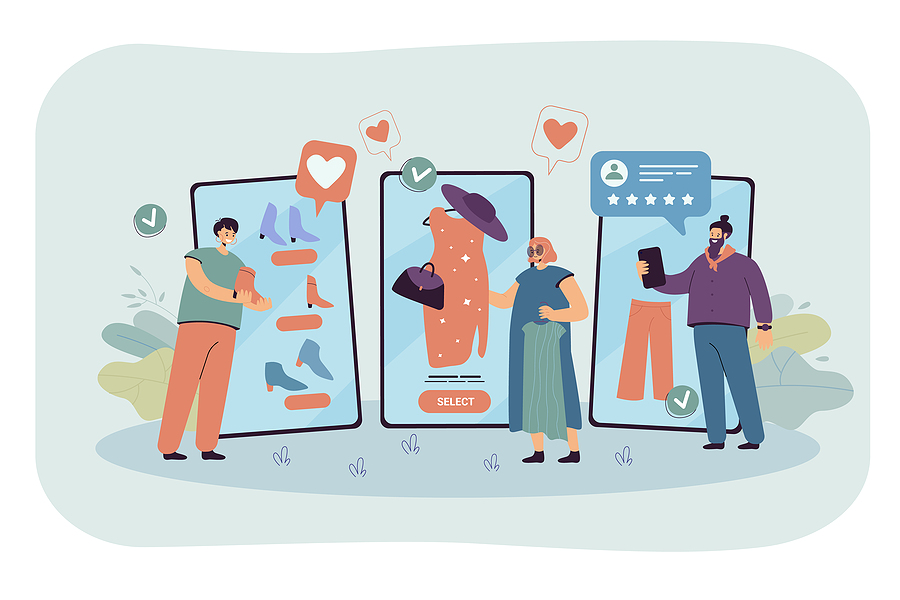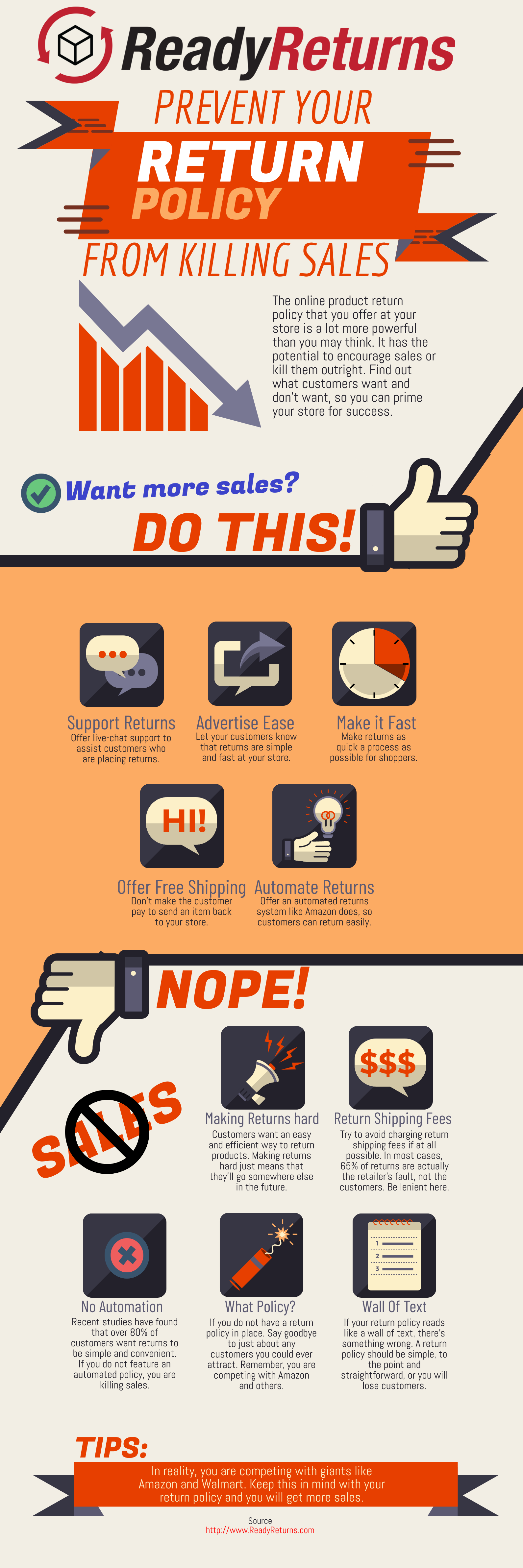Statistics on Ecommerce Bracketing: The Apparel Returns Effect

This, in turn, created an influx in returns and strained logistics to their peak during the busiest time of the year for e-tailers.
What is ecommerce bracketing and how can e-tailers solve the apparel returns affect? Dive in with me.
“A great e-commerce experience requires more than competitive prices, a robust selection of goods, fast shipping and easy returns … it takes them all. Today’s consumer mindset has changed. Services like Amazon Prime have set the bar at a higher level, with speedy delivery, low prices, a vast selection and hassle-free returns.”
What is Ecommerce Bracketing?
Before ecommerce, people went to a physical store to purchase apparel. Retailers catered to consumers by making it an experience that allowed them to try on different styles and sizes, only purchasing the ones they wanted when all was said and done.
Along came online shopping. Everything changed.
There are no virtual dressing rooms. Even if you know your size, many times it’s slightly different depending on the brand and cut. Quite often, something fits or forms differently than it appeared to in the online listing.
This difference in experience has led many consumers to buy multiple sizes and colors of apparel they like, and then return what doesn’t work out after the fact. It’s called bracketing. And it’s part of the ecommerce process.

According to Statista, 48% of consumers bracket when the sizing options are not clear. 36% of consumers bracket when they’re not able to try the clothing on in a physical store. 26% bracket simply because they are unfamiliar with the brand. And 23% bracket to find the right size after weight gain or weight loss.
BOPUS Reduces Bracketing
The Buy Online Pickup in Store (BOPUS) phenomenon has appealed to the majority of U.S. consumers, with an estimated 67% having used this process of purchase in the past year. In fact, by 2025, nearly 10% of all ecommerce orders placed will be BOPUS.
One of the main reasons why consumers love BOPUS is because returns are simpler. Say you order something online from Kohl’s to pickup in the store. You get home and it doesn’t fit. No big deal. Simply drop it at nearest Kohl’s when you have a chance for a refund or an in-store credit. Right?
Such is not the same for brands that are purely anchored online without a physical brick and mortar presence. In these instances, BOPUS returns factor into the average returns statistics, where about 17% of all products purchased are ultimately returned to the retailer by consumers, a number that’s slightly higher when apparel is the main purchase.
One thing that clearly separates BOPUS from a traditional ecommerce shopping experience, though, is the ability to see, touch and feel the item as you’re picking it up from the store—something that 77% of consumers polled say plays a large role in them choosing this type of shopping method.
Without surprise, the BOPUS model certainly cuts down dramatically on items being returned, but only because you’re drawing in the original play of the physical storefront and adding the ability to “see, touch and feel” the product before buying. Without this element, online retailers are left to tread in different waters entirely.
Zappos Encourages Bracketing
During the infancy of ecommerce, Zappos emerged as a fledgling online shoe provider… way back in 1999. It all started with bracketing.
The idea for Zappos came about in 1998. Founder Nick Swinmurn was in a mall in San Francisco, and he was looking for shoes. While one store had the style he wanted, they didn’t have the right color. Another store had the color but not the size. Nick spent an hour wandering the mall in pursuit of shoes, before going home frustrated and empty-handed.
The search for the ideal shoes went on at brick-and-mortar stores, malls and other places until Nick became so frustrated that he decided to quit his day job and launch an online shoe retailer (which was initially called Shoesite.com).
Since then, Zappos has grown massively, thanks in large part to its acquisition by Amazon, and its industry-leading customer service model.
Zappos is the original bracketing retailer. With a 365-day return policy, they encourage customers to purchase as many shoes as they want, try them all on and only keep the ones that fit. Send the rest back. No big deal.
With a return rate of 35%, you’d think that this would see the retailer losing money. But such isn’t the case.
“We don’t look at returns as an expense; we look at it as an investment in company service and it helps with customer retention,” explained Sean Kim, Zappos’ director of business development, in a 2008 interview. “We actually encourage customers who call our customer-service center to order two or three sizes and return the ones that don’t fit—and all return shipping is free for our customers.”
Unsurprisingly, 75% of Zappos reoccurring revenue comes from repeat buyers, most of which who are bracketing while they’re shoe shopping.
Statistics on Ecommerce Bracketing
Take a look at these interesting statistics on ecommerce bracketing we’ve compiled. They can better help you understand this phenomena.
➡️ 36% of consumers in the U.S. bracket a purchase simply because they’re unable to try on the clothing.
➡️ 58% of U.S. consumers order the multiple items in different sizes and colors with the intention of returning the ones that don’t fit.
➡️ 40% of consumers occasionally bracket.
➡️ During the holidays, bracketing occurs in almost 58% of apparel purchases.
➡️ 15% of apparel returns annually are directly related to bracketing.
➡️ More than $30 billion in bracketed goods will be returned this holiday season.
➡️ As much as 50% of returned bracketed goods are not re-sellable to consumers.
➡️ Adding sizing apps can reduce bracketing by up to 24%.
How to Reduce Bracketing & Returns
As you can see, bracketing is an important factor to consider if you’re selling apparel online. This consumer tendency surges over the holidays when buyer’s remorse post-purchase is more prevalent. The goods news is that there are some things you can do to reduce bracketing.
Add Sizing Apps: Sizing apps are now offered by a variety of providers and most are simple plugins that you install to your online store. They’ve been proven to help reduce bracketing by as much as 24%. Some of these apps now use smartphones to virtually size the shopper in advance, helping them find the perfect fit the first time around.
Encourage In-Store Credit On Returns: Returns are going to happen. They’re a part of selling online. One thing that you can do is offer customers in-store credit on their returns to keep the money in-house post-purchase. Even if a product comes back, you can assure that a new order goes out the door at a later date and that you earn future business.
Win Over Customers for Life: Your return policy is an extension of your online store. When you have the right policy in place, you can win over customers for life. This means being transparent, offering at least 30-days to return, reducing or eliminating return fees, and streamlining the returns process with an automated product returns system like ReadyReturns.
Wrapping it All Up
The reality is that some customers who are shopping for apparel will bracket. Can your store afford the downside of having to repackage items and reshelve them? That all depends on your bottom line.
While namesakes like Zappos grew their brand into relevance by harnessing the power of bracketing, it may not be the winning formula for all e-tailers.
Needless to say, department stores that have converted into successful online models, like Dillard’s, Nordstrom’s, Saks and others, have relied on a hybrid ecommerce BOPUS model that makes bracketing part of the new “department store experience online,” and actually encourages it to some extent. Whether you take it that far is up to you.
One bit of advice I can leave you with is this: No matter what, apparel is returned about 21% of the time, regardless of whether bracketing is involved or not (and it quite often is). Make these returns easy. Make them seamless and painless. Do this, and you can earn a customer for life. Can you really put a value on that?
Need Even More tips?
We’ve got you covered. Check out these three related guides below that we’ve created for you. Also, take a look at the infographic we’ve included for you here that’s packed full of interesting tidbits and factoids you need to know now about how you can improve your return policy to stop killing sales.
➡️ One Size Doesn’t Fit All: Reducing Online Returns in Fashion Ecommerce

What You Should Do Now
Here are 3 ways ReadyReturns can help you deliver amazing return experiences that eliminate prepaid labels and boxes, delight customers, and protect your margins:
Schedule a Demo – See how ReadyReturns turns product returns into your competitive advantage with “Amazon-like” returns and cost-saving features.
Start Your Free Trial of ReadyReturns (No CC Required) – Set up in minutes. Instantly offer QR code returns, product exchanges, and custom return rules that turn frustrated customers into repeat buyers.
Try ReadyCloud at No Cost – Why manage shipping and returns separately? Get ReadyShipper X, ReadyReturns, and more in one unified platform for seamless fulfillment and order management.
Share On:










